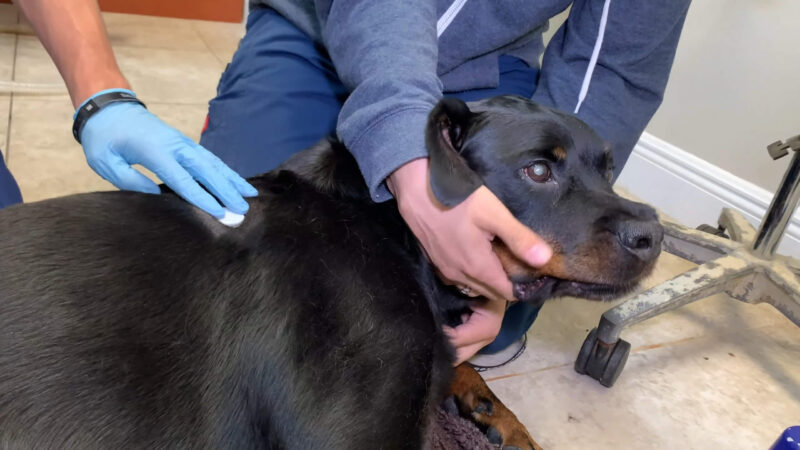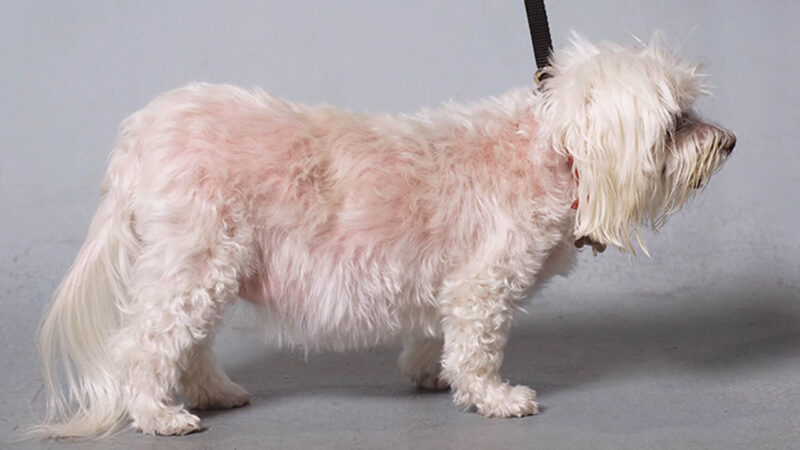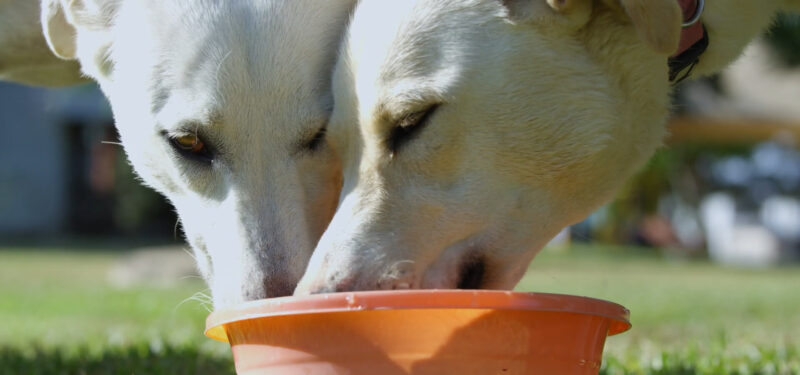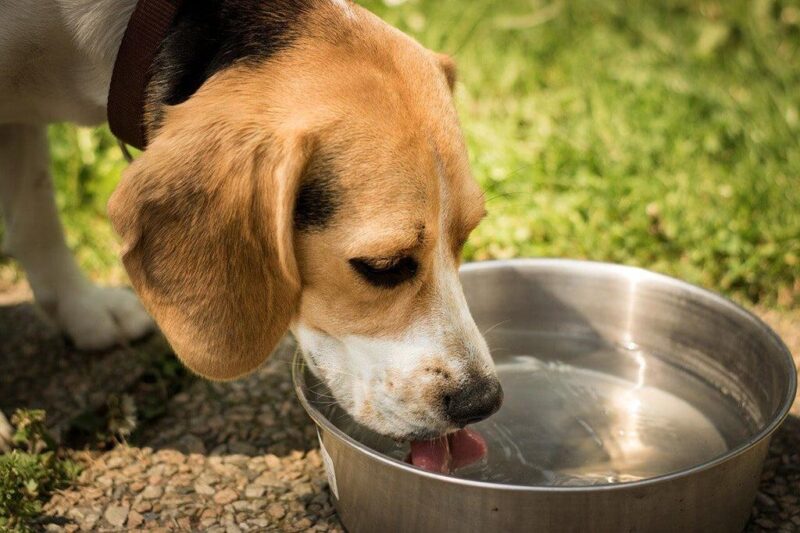If you’ve noticed that your gray-muzzled companion is emptying their water bowl faster than ever, it might not just be because they’re staying hydrated. While proper hydration is essential for dogs of all ages, excessive thirst—known as polydipsia—can be a sign of underlying health issues, particularly in older dogs.
If your senior dog is suddenly gulping down water, it’s important to pay attention, as this could indicate a medical condition that requires immediate attention.
Catching this change early on can make a huge difference in managing your dog’s health. Understanding the potential causes behind increased water consumption can help you get ahead of any issues, ensuring your dog remains happy and healthy as they age.
Common Health Conditions Associated with Increased Thirst
Excessive thirst in senior dogs is often linked to a range of medical conditions. Some of the most common health problems that could be causing your dog to drink more include:
1. Kidney Disease
The kidneys are vital in regulating your dog’s fluid balance and filtering waste from the bloodstream. As dogs age, their kidney function may decline, leading to Chronic Kidney Disease (CKD). In CKD, the kidneys struggle to efficiently filter toxins, resulting in increased thirst as the body attempts to flush out waste.
Symptoms:
- Increased thirst and urination
- Loss of appetite
- Weight loss
- Lethargy
A veterinarian can diagnose kidney disease through blood tests and urine analysis. Depending on the severity, your vet may recommend dietary changes to reduce the burden on the kidneys, along with medications to manage the condition. In some cases, subcutaneous fluids may be necessary to keep your dog hydrated.
2. Diabetes Mellitus

Diabetes occurs when the pancreas fails to produce enough insulin, or the body doesn’t use it properly, leading to elevated blood sugar levels. This causes dogs to urinate more frequently, which in turn makes them thirstier.
Symptoms:
- Excessive thirst and urination
- Increased appetite despite weight loss
- Cloudy eyes (cataracts)
- Sweet-smelling breath
Diabetes in dogs is typically managed with insulin injections, which help regulate blood sugar levels. Along with insulin, dietary changes—like a high-fiber, low-fat diet—are crucial in controlling blood sugar. Regular vet visits are essential for monitoring and adjusting the treatment plan.
3. Cushing’s Disease

Cushing’s disease occurs when the adrenal glands produce too much cortisol. This hormone regulates several body functions, and when in excess, it can lead to several health problems, including increased thirst.
Symptoms:
- Increased thirst and urination
- Potbellied appearance
- Thinning skin and hair loss
- Panting
Cushing’s disease can often be managed with medications such as trilostane, which suppresses the overproduction of cortisol. In some cases, surgery to remove an adrenal tumor may be necessary. Regular monitoring of cortisol levels is crucial to ensure the treatment remains effective.
4. Hypercalcemia (Elevated Calcium Levels)
Hypercalcemia can occur due to various reasons, including certain types of cancer. High calcium levels lead to increased thirst and can cause other serious health issues.
Symptoms:
- Excessive thirst and urination
- Vomiting
- Loss of appetite
- Weakness or lethargy
A blood test can diagnose hypercalcemia, and further tests may be required to determine the underlying cause. Treatment depends on the cause and may involve medication, dietary changes, or surgery if a tumor is involved.
5. Urinary Tract Infections (UTIs)

UTIs are common in dogs, especially senior females, and they can cause increased urination, which may result in excessive drinking to compensate.
Symptoms:
- Straining or discomfort while urinating
- Blood in urine
- Urinating in unusual places
UTIs are typically treated with a course of antibiotics. Your veterinarian will confirm the infection through a urine analysis and may require follow-up testing to ensure the infection has cleared.
6. Medication Side Effects
Certain medications, such as corticosteroids, diuretics, or anticonvulsants, can cause increased thirst as a side effect. If your dog’s water consumption increases after starting a new medication, consult your vet. Talk to your veterinarian about the medication’s side effects.
Adjusting the dosage or switching to an alternative treatment might reduce your dog’s excessive thirst.
7. Dietary and Environmental Factors

Sometimes, the reason behind increased thirst is less serious. Dogs consuming high-sodium foods or experiencing more exercise during hot weather may naturally drink more water.
Helpful Tips:
- Ensure your dog always has access to fresh, clean water.
- Feed your dog a balanced diet that is appropriate for their age and health.
- Monitor exercise levels, especially in hot weather, and adjust as needed.
Read more to find out if your dog can eat strawberries.
When to Visit the Vet
If your senior dog’s thirst persists for more than a day or two, or if you notice other symptoms, it’s time to consult your veterinarian. Even if the issue seems mild, early intervention is key to managing health problems effectively.
Preparing for a Vet Visit
To help your vet get to the root of the issue, take note of your dog’s symptoms, including their water intake over 24 hours. If your dog is on medication, bring a list of all prescriptions, over-the-counter medications, and supplements they’re taking.
During the visit, the vet may recommend diagnostic tests, such as blood work, urine analysis, and possibly imaging tests like x-rays or ultrasounds.
Diagnostic Tests Your Vet May Recommend:
- Blood Tests: Evaluate organ function and detect abnormalities.
- Urine Analysis: Detect kidney issues or infections.
- Imaging: X-rays or ultrasounds to take a closer look at organs.
- Hormone Tests: To check for conditions like Cushing’s disease.
Implementing a Care Plan for Your Dog

Once the cause of your dog’s increased thirst is identified, your vet will help develop a treatment plan. Managing chronic conditions in senior dogs often requires consistent care and monitoring. Here’s what you can do:
- Follow Medical Advice:
- Adjust Diet and Nutrition
- Maintain Proper Hydration
- Monitor Progress
- Provide Comfort
Conclusion
An increase in your senior dog’s thirst may be a sign of a deeper health issue. Whether it’s kidney disease, diabetes, or simply a side effect of medication, paying attention to your dog’s drinking habits can help catch health problems early, ensuring timely and effective treatment.
By being proactive and working closely with your vet, you can help your senior dog enjoy a comfortable, healthy life in their golden years.







